Cerebral air embolism is rare but can be fatal. The source of emboli can be venous or arterial and is usually iatrogenic.
On this page:
Clinical presentation
Presentation is variable and non-specific but includes confusion, motor weakness, decreased consciousness, seizure, and loss of vision.
Pathology
Air embolism occurs when air has access to a vessel and there is a pressure gradient favoring entry into the circulation. Multisystem involvement is common. Systemic air emboli occlude small arteries and can be fatal if they enter the cerebral circulation or coronary arteries. Small bubbles can occlude cerebral arteries causing stroke or death. Cerebral air embolism is a particular risk of neurosurgery and cardiac surgery. Lung biopsy can cause systemic air embolism if an open coaxial needle lies in a pulmonary vein during inspiration.
Paradoxical embolism can occur from systemic veins through a right to left shunt such as a cardiac septal defect or pulmonary AVM. Elevated right heart pressure can open a patent foramen ovale, (prevalence of probe patent PFO is 35% at autopsy).
If a large volume of air enters the systemic veins it collects in the right ventricle. The pumping action creates a froth of blood and air, and because air is compressible, cardiac output can fall precipitously causing circulatory failure.
Etiology
-
arterial:
trauma
surgery (especially cardiothoracic/neurosurgery)
arterial lines
lung biopsy (a valved coaxial needle can prevent air inadvertently entering a pulmonary vein)
-
venous:
central venous catheter placement or removal
IV contrast injection into a peripheral line
Complications
Cerebral air/gas emboli can act like thrombotic emboli and cause end-artery occlusion and ischemic stroke. Cerebral edema can also develop.
Radiographic features
The distribution of gas is variable and extensive cerebral infarction, often in a watershed distribution, maybe the only visible change.
CT
may only be diagnostic in the acute setting as gas is slowly absorbed 4
use of lung windows may help increase detection
MRI
MRI is primarily used to evaluate the complications of cerebral air embolism (infarction) rather than to detect the air directly.
Treatment and prognosis
Treatment is typically supportive although there is increasing evidence for the use of hyperbaric oxygen therapy.


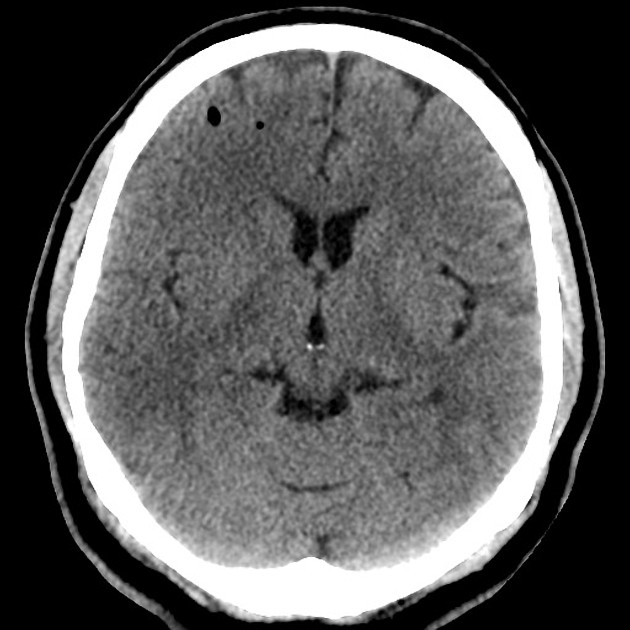
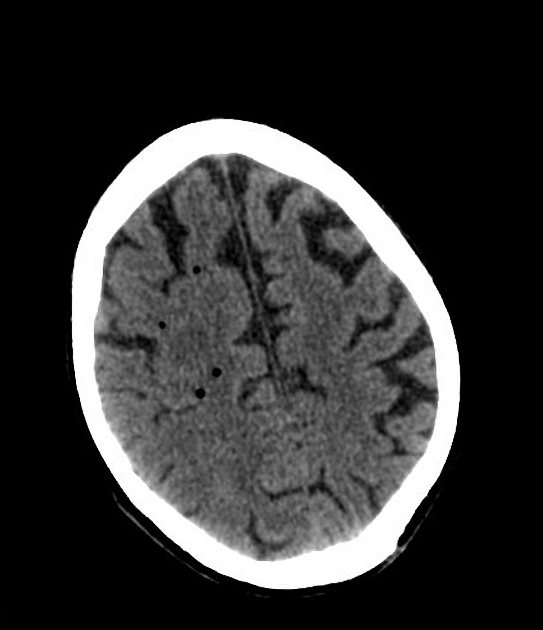

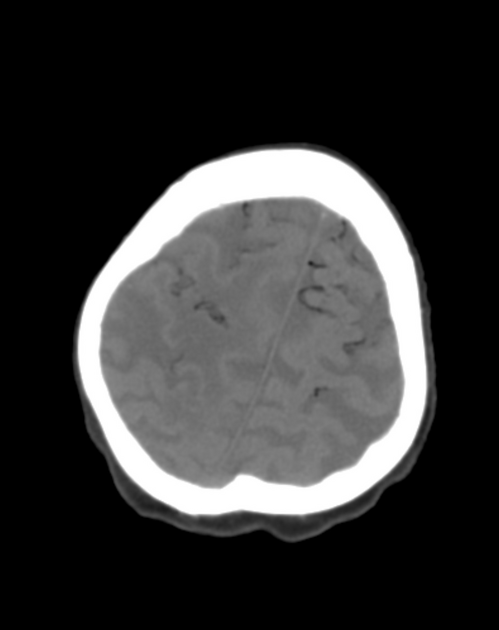
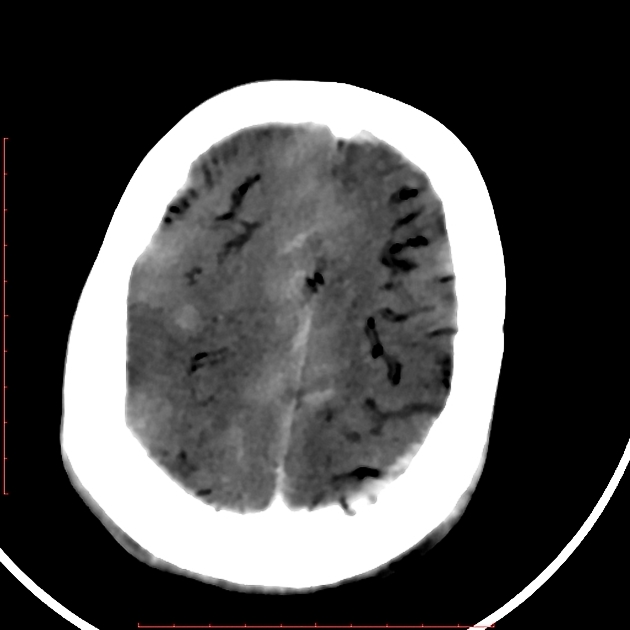
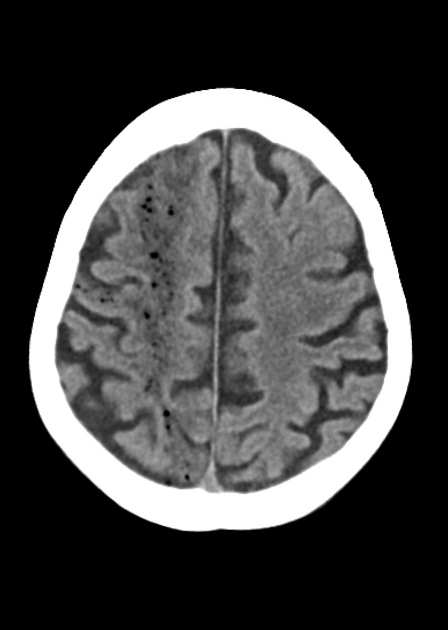



 Unable to process the form. Check for errors and try again.
Unable to process the form. Check for errors and try again.